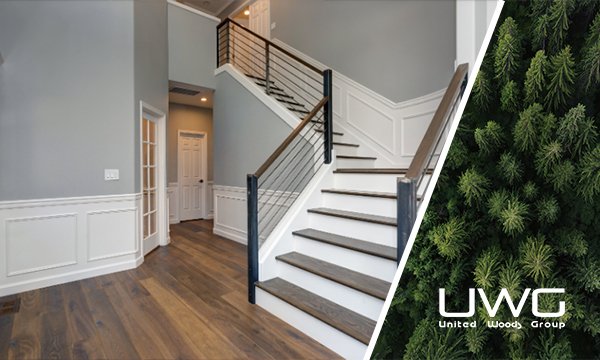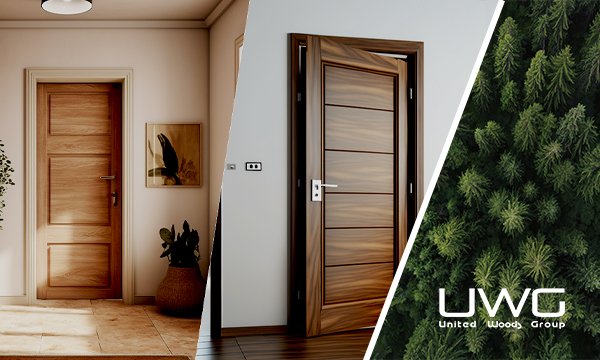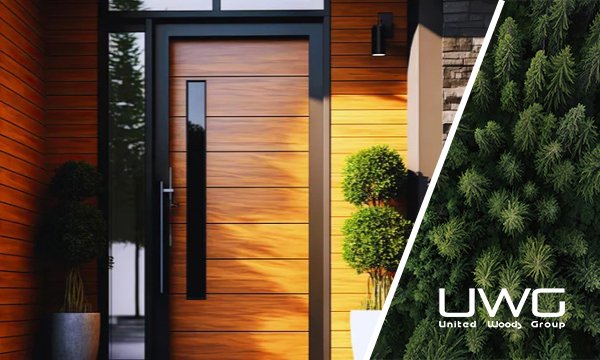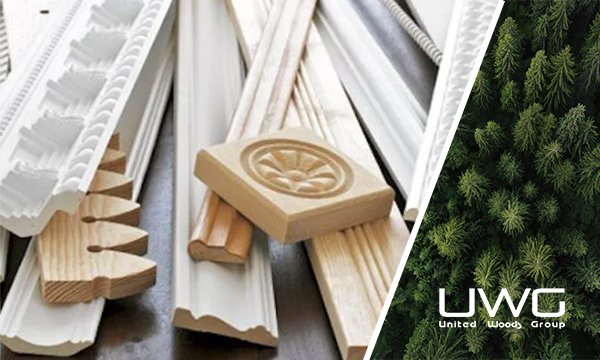Choosing the right materials for cabinetry and furniture is crucial for wholesalers and contractors. The debate between laminate and melamine often arises, but understanding the nuances can help you make a more informed decision. Let’s delve into the differences and see why melamine might just be the better option.
Melamine is a low-pressure laminate (LPL) made with a pressure of 300-500 psi (pounds per square inch), whereas laminate, also called Formica, is a high-pressure laminate (HPL) created with over 1400 psi. This difference in manufacturing processes impacts their durability, cost, and application suitability.
- Is Melamine or Laminate Better?
- How Do I Know If I Have Laminate or Melamine?
- What is More Expensive, Melamine or Laminate?
- How to Tell the Difference Between Laminate and Melamine
- What is the Difference Between Laminate and Melamine Furniture
- What is the Difference Between Laminate and Melamine Kitchen Cabinets
- What is the Difference Between Laminate and Melamine Flooring
- Melamine vs Laminate Durability
- Advantages of Melamine in Various Applications
- Melamine Care and Maintenance
- Summary
Now, let’s explore the specifics to see why melamine often stands out.
Is Melamine or Laminate Better?
When choosing between melamine and laminate, several factors come into play, including cost, durability, ease of installation, and aesthetics. Whilst laminate costs a little more than melamine, it is more resistant to moisture, chemicals, heat, and force. This makes laminate a strong contender for surfaces that will endure heavy use and exposure to the elements. However, working with laminate takes skill and more specialized machinery than building with melamine, which can increase labor costs and complexity for contractors.
Melamine is a great choice for internal cabinetry, drawers, and shelving due to its cost-effectiveness and ease of use. Melamine’s smooth finish and consistent color throughout the material make it an attractive option for modern designs. Additionally, melamine is available in a wide range of colors and finishes, allowing for greater design flexibility without the higher cost associated with custom laminate finishes.
From a practical standpoint, melamine’s lower cost and easier handling make it an excellent choice for large projects, where budget constraints are a significant consideration. Contractors and wholesalers often prefer melamine for its balance of affordability and quality, ensuring that projects can be completed within budget without compromising on aesthetics or functionality.

How Do I Know If I Have Laminate or Melamine?
Identifying whether you have laminate or melamine can sometimes be tricky, but there are key differences that can help. Melamine cabinets typically have a solid color or wood grain pattern throughout the entire thickness of the material. This means that even if the surface gets chipped or scratched, the underlying material will still match the surface, making damage less noticeable.
In contrast, laminate cabinets can have a wide variety of colors, patterns, and textures, including options that mimic the look of natural wood or stone. The surface of laminate is a decorative layer that is fused to a core material, usually particleboard or MDF. If the laminate surface is damaged, the core material underneath will often be a different color, making repairs more noticeable.
Another way to distinguish between the two is by examining the edges. Melamine edges are typically smoother and can be sealed with edge banding that matches the surface. Laminate edges, on the other hand, might reveal the layers of the material, especially if the edge banding is not perfectly applied. Feeling the surface can also give clues; melamine tends to have a more uniform, slightly softer texture, while laminate can feel more rigid and artificial.

What is More Expensive, Melamine or Laminate?
Cost is a significant factor in choosing between melamine and laminate. While melamine may be less expensive than laminate, it isn’t worth choosing low-quality melamine. If you’re looking for a long-lasting finish, look for thicker thermal-fused melamine. This type of melamine is more durable and offers better resistance to scratches and impact, making it suitable for high-traffic areas.
The texture gives cabinets a three-dimensional look and allows for faux wood grains and bamboo textures. This makes melamine a versatile and economical choice for many projects, providing a high-end look without the associated costs. In contrast, laminate, especially high-pressure laminate, tends to be more expensive due to the more intensive manufacturing process and the higher quality of the materials used.
For wholesalers and contractors, choosing melamine can result in significant cost savings, particularly on large-scale projects. These savings can be passed on to clients or reinvested in other areas of the project, enhancing overall profitability. Additionally, the lower material cost of melamine can make it a more attractive option for clients looking for quality finishes on a budget.

How to Tell the Difference Between Laminate and Melamine
When comparing the two, look at the edges and surface patterns. Melamine tends to have a consistent texture and color, while laminate may have a more varied appearance with distinct edges. The manufacturing process of melamine results in a smooth, uniform finish, while laminate can have a more textured feel, especially if it mimics natural materials like wood or stone.
Inspecting the edges can also reveal differences. Melamine edges are usually seamless and match the surface closely, thanks to edge banding that covers the core material. Laminate edges might expose the layers of the laminate, especially if the edge banding does not perfectly match the surface pattern. Additionally, melamine surfaces are often more matte, while laminate can have a glossy finish depending on the design.

What is the Difference Between Laminate and Melamine Furniture
For furniture, melamine is often preferred for its ease of maintenance and cost. Laminate furniture might offer more design variety, but melamine’s durability and smooth finish are significant advantages. Melamine furniture is also easier to clean and less prone to showing scratches and wear, making it an ideal choice for high-traffic areas like offices, schools, and public spaces.
Laminate furniture can offer a wider range of designs and textures, but this comes at a higher cost and often requires more maintenance. The durability of melamine and its ability to resist stains and scratches make it a practical choice for furniture that needs to withstand daily use. Additionally, melamine’s lower cost can make it a more attractive option for bulk orders, allowing for more extensive furnishing projects without exceeding budget constraints.

What is the Difference Between Laminate and Melamine Kitchen Cabinets
In kitchen applications, melamine’s resistance to heat and moisture makes it a practical choice. Laminate may provide a more extensive range of aesthetics, but melamine’s functional benefits are hard to ignore. Melamine cabinets are easy to clean and maintain, making them ideal for busy kitchens where spills and stains are common.
Laminate kitchen cabinets can offer more design flexibility, with options that mimic natural wood, stone, and other materials. However, this design versatility often comes at a higher cost and may require more maintenance to keep the surfaces looking their best. In contrast, melamine cabinets provide a durable, cost-effective solution that can withstand the rigors of daily kitchen use without sacrificing aesthetic appeal.

What is the Difference Between Laminate and Melamine Flooring
For flooring, laminate might be more suitable due to its higher durability and resistance to wear and tear. However, melamine’s use in cabinetry and furniture can help maintain a cohesive design throughout a space. While laminate flooring offers excellent durability and a wide range of designs, melamine can be used effectively for baseboards, trim, and other decorative elements that complement the flooring..

Melamine vs Laminate Durability
In terms of durability, laminate has the edge over melamine. However, for interior applications such as cabinets and shelving, melamine’s durability is more than sufficient, providing a long-lasting, attractive finish. Melamine’s resistance to stains, heat, and moisture makes it a practical choice for areas that require easy maintenance and frequent cleaning.

Advantages of Melamine in Various Applications
Ease of Installation
One of the significant advantages of melamine is its ease of installation. Melamine boards are readily available in standard sizes and can be easily cut to fit custom dimensions. This makes melamine an ideal choice for projects with tight timelines, as it reduces the need for extensive preparation and specialized tools.
Versatility in Design
Melamine offers a wide range of design options, from solid colors to wood grain patterns. This versatility allows wholesalers and contractors to provide clients with various choices that match their design preferences. The ability to achieve a high-end look with melamine at a fraction of the cost of laminate or real wood is a significant advantage.
Environmental Considerations
Melamine is often made from recycled materials, making it a more environmentally friendly option compared to some other materials. Choosing melamine can help reduce waste and promote sustainability in construction and renovation projects. Additionally, the durability and long lifespan of melamine products mean they will not need to be replaced as frequently, further reducing their environmental impact.

Melamine Care and Maintenance
Maintaining melamine surfaces is straightforward, which adds to its appeal. Regular cleaning with a mild detergent and water is usually sufficient to keep melamine surfaces looking their best. Avoid using abrasive cleaners or scrubbers, as they can damage the surface. For tougher stains, a solution of vinegar and water can be effective.
Repairing Melamine Surfaces
While melamine is durable, it can sometimes get scratched or chipped. Minor scratches can often be repaired with a melamine touch-up kit, available at most hardware stores. For larger chips or damage, it might be necessary to replace the affected panel. The ease of working with melamine means that repairs can usually be completed quickly and cost-effectively.

Summary
In conclusion, while both laminate and melamine have their merits, melamine stands out for its cost-effectiveness, ease of use, and suitable durability for many applications. Wholesalers and contractors can benefit from choosing melamine for projects requiring high-quality, aesthetically pleasing finishes without the higher costs associated with laminate. Whether for residential, commercial, or retail applications, melamine offers a versatile and practical solution that meets the demands of modern design and construction.







